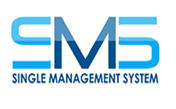Online E-learning
Anytime Workshops
The only ISO Related Online Training Accredited Provider to the ANSI Standard
Jeffrey Lewis has been a partner of Manex since 2004. Jeff’s expertise in ISO Management Systems and his ability to implement and develop internal auditing training on behalf of Manex has been effective and critical for Manex’s clients. Jeff is a seasoned and effective ISO Expert and has the ability to deliver effective ISO Services has been important to ensuring the sustainable success of our clients. Jeff adapts to provide solutions for meeting the needs of a wide cross section of our clients. Clients are impressed by Jeff’s grasp of their specific issues and how their challenges are favorably resolved.
Gene Russell
Board Member NIST/MEP National & California Network – the person signing off on the recommendation
Which slider image represents your company?
Strategic Alignment
Our training course delivers the Strategic Alignment between Strategy and Operations through ISO Integrated Management System Standards.
ISO Strategy Alignment Requirements
 Risk
Risk
6.1.1
When planning for the quality management system, the organization shall consider the issues referred to in 4.1
 Plan
Plan
4.1
The organization shall determine external and internal issues that are relevant to its purpose
and its strategic direction.
 Do
Do
5.1.1 (b)
ensuring that the quality policy and quality objectives are established for the quality management system and are compatible with the context and strategic direction of the organization;
 Check
Check
9.3.1
Top management shall review the organization’s quality management system, at planned intervals, to ensure its continuing suitability, adequacy, effectiveness and ALIGNMENT with the strategic direction of the organization.
 Act
Act
10.3
The organization shall consider the results of analysis and evaluation, and the outputs from
management review (including Strategy alignment), to determine if there are needs or opportunities that shall be addressed as part of continual improvement.
US Manufacturing Companies Failure Trends
27 years of US Manufacturing business failure rates. The data tells a story. 80% of US manufacturing companies have failed within 25 years of starting up. Let’s dig a bit deeper.
“50% of businesses fail within first 5 years.” That is a ubiquitous fact tossed around by budding entrepreneurs discussing their business struggles with their friends and family members. A business owner, who has made it through the first five years, may take a deep breath and think – “Phew, dodged that bullet. Now we are home free” Wrong!
A fact that is not as widely publicized and hence less spoken about is that the option of failure continues beyond the first five-year period. It continues even beyond the first five-year period. The US Bureau of Labor Statistics data shows that about another 30% of companies fail between year five and year fifteen. And, only about 20% of companies make it into their 25th year of existence.
This trend holds for all businesses, including manufacturing companies. The graph below shows US manufacturing companies’ survival rate (as reported by USBLS) by the number of years from startup (Note – 1).

Case Study
On the Road to Disaster: Strategic Misalignments and Corporate Failure’, The introduction states that ‘Organizational failure can be brought about by strategic misalignments; e.g., an inappropriate strategy for the external environment, or a poor operationalization of the strategy.’ The paper continues, ‘the link between strategic alignment and competitive advantage (and conversely misalignment and failure) has been recognized’.
Given the statistics the Economist Intelligent Unit, the Economist Impact
Research and MIT of managers specific knowledge of ‘Strategy’, the failure of manufacturing companies over time can be attributed to Strategic Misalignment.
In a study (Elsevier Volume 49, Issue 4, August 2016, Pages 491-506) by Loizos Heracleous Professor of Strategy and Organization at the Warwick Business School, and Head of the Strategy Group Katrin Werres.
ISO Management System Standards
A path to Strategic Alignment
and to operationalize its Framework.
Training Cost: $1500/Person
Perquisite: Company ISO Certified
- Implement Strategic Alignment through a ISO Management System Methodology
- Enable your ISO driven Strategy Map from your existing ISO Format
- Support the Continual Improvement of the Balance Scorecard
- Distinguish the Strategy metrics from the Operations metrics
- Introduce financials as part of your ISO Management System
- Identify the alignment of the operations with the strategy
- Integrate the operational disciplines

Risk-based Internal Audit Training -19011:2018
ISO Requirement Audit completion prior to certification
Training Cost: $1500/Person
Perquisite:
ISO Management System Standard – A path to Strategic Alignment
- Conduct internal risk-based audits
- Manage internal risk-based audit programs
- Write the mandatory audit reports
- Plan risk-based audits
- Have access to risk based internal audit format

Online Training
- Facilitates self paced online training on the audit process.
- Meets ANSI content and methods requirement for Adult learning.
- Provides risk based audit template to conduct workplace audit.
- Enables a 19011:2018 requirement for a completed audit for auditor qualification, which is also an ANSI practicum requirement.
- Identifies the role of the Audit Program Manager.
- Evaluates competency for certification on a completed work place audit report.
- Includes training on how to integrate the operational disciplines of ISO 9001, 14001, 14001, 22000, as a single management system.
- Teaches PDCA role in a risk driven format.




